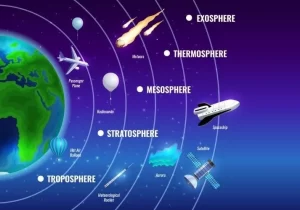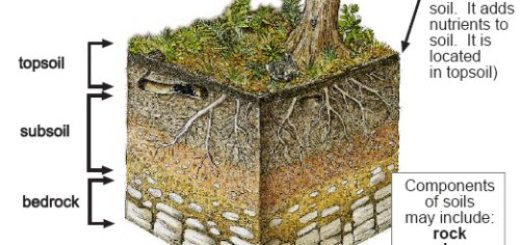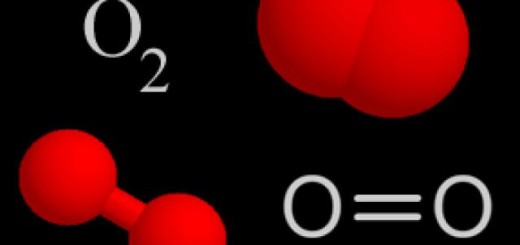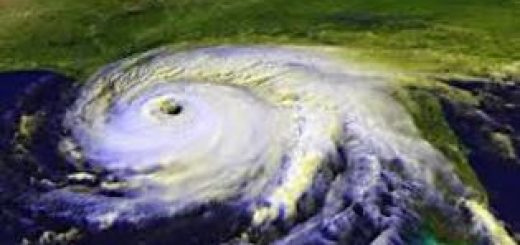Characteristics and Importance of thermosphere layer, Ionosphere layer and Exosphere layer
The thermosphere layer is called the thermal layer as it is the hottest layer of the atmospheric envelope. It is the fourth layer of the atmospheric envelope, The temperature of the thermosphere layer increases at a high rate as we go up until it reaches 1200° Celsius.
The thermosphere layer
The thermosphere layer extends from the mesopause (at a height of 85 km above the sea level) to a height of 675 km above the sea level, Its thickness is 590 kilometres. The upper part of the thermosphere layer contains charged ions and the pressure of these ions extends up to 700 km above the sea level, So this part is called the ionosphere.
The thermosphere layer is the layer of the Earth’s atmosphere directly above the mesosphere and below the exosphere, within this layer of the atmosphere, ultraviolet radiation causes the photoionization/photodissociation of molecules, creating ions in the ionosphere.
The thermosphere layer begins at about 85 km above sea level, At these high altitudes, the residual atmospheric gases sort into strata according to molecular mass, Thermospheric temperatures increase with altitude due to the absorption of highly energetic solar radiation.
Temperatures are highly dependent on solar activity and can rise to 1,700 °C or more, Radiation causes the atmosphere particles in this layer to become electrically charged (see ionosphere), which enables radio waves to be refracted and thus be received beyond the horizon.
Dynamics of the thermosphere are dominated by the atmospheric tides, which are driven by the very significant diurnal heating, The Atmospheric waves dissipate above this level because of collisions between the neutral gas and the ionospheric plasma. It can be affected by solar activity. during solar flares and coronal mass ejections, the thermosphere can become hotter and more expanded.
The thermosphere layer contains an appreciable concentration of elemental sodium located in a 10-km thick band at the mesosphere’s edge, 80 to 100 km above the Earth’s surface. The last layer of the atmospheric envelope is called the thermal layer because it is the hottest layer in the atmospheric envelope.
The thermosphere is the least dense layer of Earth’s atmosphere, with air pressure less than one trillionth of sea level pressure. The thermosphere absorbs the sun’s extreme ultraviolet (EUV) and X-ray radiation, which is why it is so hot. The thermosphere is home to the International Space Station and many other satellites.
The thermosphere is where auroras, or the northern and southern lights, occur. The thermosphere is home to the ionosphere, a region of the atmosphere where atoms and molecules have been stripped of some of their electrons. This gives the ionosphere special electrical properties that are used by radio and communication systems. This ionization is caused by the sun’s ultraviolet radiation.
The thermosphere is very hot and although the temperature is in the thousands of degrees Fahrenheit, you would freeze if you were there. This is because there are few air molecules and there is insufficient heat transfer to keep you warm. The thermosphere is constantly expanding and contracting. This is because the amount of solar radiation it absorbs varies depending on the time of day and the sun‘s activity level.
The thermosphere is so thin that the air molecules are spaced far apart. This means that sound waves cannot travel through the thermosphere, so it is completely silent there. The thermosphere is so thin that if you were to stand at the bottom of the thermosphere, you would be able to see the stars during the day.
The thermosphere is a very important layer of the Earth’s atmosphere because it protects us from harmful radiation from the sun. The thermosphere is where space shuttles and other spacecraft re-enter the Earth’s atmosphere.
The thermosphere expands and contracts during the day and night, due to the Sun‘s heat. This expansion and contraction can cause drag on satellites, which can shorten their lifespan. The thermosphere is home to a variety of space weather phenomena, such as geomagnetic storms and solar flares. These phenomena can disrupt radio communications and power grids on Earth.
The ionosphere layer
The ionosphere layer is a layer that contains charged ions, and it has an important role in wireless communications and broadcasting as it reflects the radio waves transmitted by the radio stations and the communication centres.
The ionosphere layer is surrounded by two magnetic belts which are known as Van- Allen belts. These belts play an important role in the scattering of the harmful charged cosmic radiations away from the Earth. This scattering causes the occurrence of the Aurora phenomenon, Van- Allen belts are called by this name related to the scientist Van-Allen who discovered them.
Van-Allen belts play an important role in protecting the Earth because they play an important role in scattering the harmful charged cosmic radiations away from the Earth.
Aurora phenomenon
The Aurora phenomenon appears as brightly coloured light curtains seen from both poles (the North and the South Poles) of the Earth.
The occurrence of the aurora phenomenon is due to the scattering of harmful charged cosmic radiations away from the Earth by Van-Allen belts.
Exosphere layer
The atmospheric envelope is inserted with the outer space in a region known as the Exosphere, in which the satellites orbit around the Earth with cameras and a telescope, The satellites are used to transmit weather condition information and TV programs.
You can subscribe to Science Online on YouTube from this link: Science Online
You can download Science online application on Google Play from this link: Science online Apps on Google Play
Atmospheric layers & pressure, Troposphere, Stratosphere, Mesosphere & Thermosphere
The characteristics and the importance of the mesosphere layer
The characteristics and the importance of the troposphere layer
The characteristics and the importance of the stratosphere layer





Nice work!
Thank you very much
Thanks u so much.
You are welcome
Thank you very much for your comment
this is really cool!!!!
Thank you very much for your comment
This is very encouraging research. Thanks a lot.
You are welcome
Thank you very much for your comment
Hello, Thank you